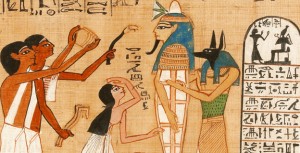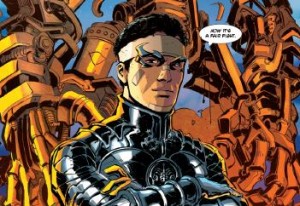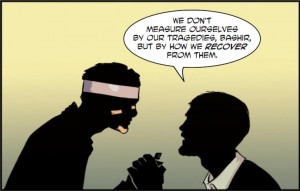What does the Silver Scorpion have to do with literature? Students taking English 110 this summer had the chance to find out. In another first, the comic book created by Americans and Syrians as part of the Youth Ability Summit, was part of a college course about literature, composition, and critical thinking.
Read on about Professor Webb’s reflections on assigning the Silver Scorpion, as well as excerpts from her students in this guest post.
—–
I believe in lifelong learning, in diversity, in the value of every culture, and in the experiences of each individual. I believe that education and learning should expand our ideologies, our world view; it should inspire goodwill for and among all people. So, I asked my students to read a comic book.
This may not seem like the most challenging assignment. Indeed, comic books with their graphic illustrations, much like the ancient illuminated texts, help the reader both understand the words on the page and “see” the action and characters; the story “plays” out on the page as one reads. The intellect and imagination are free to engage in other activities. Or are they?
Comic books, like the radical poetry of the beatniks, or the one act plays of postmodern playwrights like Samuel Beckett challenge our assumptions about literature, about what one reads and why an individual reads anything at all. Many of my students were initially surprised, but delighted that their first reading assignment would be the Silver Scorpion.
As many discovered, the comic book can offer a great deal to the inquisitive reader. One student wrote:
Comic books can be literature. This stands in stark contrast to those that would have you believe literature is elevated and the dominion of the educated. It is true that literature can be born of a wicked talent for writing and knowledge of histories, but its appeal is universal, as are its subjects. The combination of illustration and words found in the Silver Scorpion serve the larger population of Syria and the world as a whole as the difficulties of the disabled are illuminated in graphic and dramatic detail.
After my lecture on the history and origins of literature—the art of storytelling that dates as far back as 30,000 B.C.—the students began to understand that literature is not just those difficult, long, cerebral and sometimes surreal plays, poems and novels that they have often been assigned in “traditional” literature courses. They also were allowed to accept as literature those texts they enjoy reading such as comic books like the Silver Scorpion.
It wasn’t just a story—it gave you a hero’s journey the [oldest] kind of story of ever told. Look at texts like the Bible, The Epic of Gilgamesh, Spiderman, Batman, and the Silver Scorpion. Each of [these] superheroes goes through trials and tribulations, a sense of obligation and inside them something changes and they become great. It’s not a coincidence that it makes a good story. People want to go through experiences through stories. It’s the oldest form of entertainment.

Bashir, the Silver Scorpion is no less an Odysseus, a Gilgamesh, or a Beowulf than he is a Spiderman or a Superman. Bashir is a hero because he symbolizes hope, justice, and the power of the individual to inspire change. This hero’s journey is somewhat different because it addresses issues relevant to our modern society; issues and problems that should no longer exist given the technological wealth of industrialized nations and that we live in a global world in which our “neighbors” include those people and nations who are no less than an ocean away from us.
“…society has a soft spot when learning truth behind stories we thought were only fiction. In the Silver Scorpion’s case, we observed what happened to Bashir after he made fun of disable people in wheel chairs. He lost his best friend and became bound to a wheelchair himself. These stories teach us to be a little more mindful of the blessings we do have.”
What my students gained by reading the Silver Scorpion was no less than what they gain from reading any form of literature. The comic book, as do all forms of literature both ancient and modern, showed us the experiences of others, showed us ourselves in the others of whom we read.
Literature critiques societies, policies, assumptions, ideologies, and challenges us to walk a mile in another’s shoes. The other becomes ourself through the act of reading, seeing, or hearing a story. Through reading literature we can overcome prejudice, intolerance, discrimination, and a whole host of social ills that leave us all isolated, weak and vulnerable.
By the end of the semester, I believe my students came to terms with literature in their lives. Literature, the art of storytelling and of expressing our ideas, feelings, visions, and fears is and has always been a singularly unique and central part of human life. The Silver Scorpion helped bring my students into the life of another, in this case, a young man struggling with a disability in a conflict ridden country and how he overcame it by finding his strength and will to move forward. From reading about Bashir, but also from learning about the very special students who attended the 2010 Youth Summit in Syria and of their shared stories, experiences, and inspiring ideas, my students found literature again, and, I hope, learned to embrace it and all the people that reading will introduce to them.
What is literature? I asked of my students throughout the semester and they came to many conclusions. I will end this piece with the inspirations of some of my students.
What is Literature?

